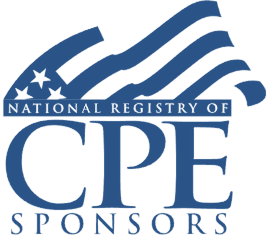- videocam On-Demand Webinar
- signal_cellular_alt Intermediate
- card_travel Estate Planning
- schedule 90 minutes
SECURE 2.0 Act and Charitable Remainder Trusts: Planning Techniques and Key Considerations for Estate Planners
Trust Provisions, Minimizing Taxes, Preserving Assets, Payments From IRA and 401(k) to CRT, Beneficiaries Designations
Welcome! Save 30% on all CLE, CPE, and Professional Skills webinars, plus 15% off any annual pass with code HOLIDAY25
About the Course
Introduction
This CLE/CPE webinar will prepare estate planning practitioners and tax advisers to identify key estate planning issues associated with utilizing charitable remainder trusts (CRTs) under the SECURE Act and SECURE 2.0. The panelist will outline the SECURE Act's rules and requirements, the implications of the recently issued SECURE Act final regulations, and the implications of SECURE Act 2.0 and its proposed regulations on trust planning for IRAs and other retirement plan accounts (collectively "IRAs").
Description
CRTs are income tax exempt irrevocable trusts that make payments to one or more individuals for life or a term of years, with the remaining assets distributed to one or more charities. Under the SECURE Acts, the 10-year rule will apply to most retirement plan inheritors and has renewed interest in using CRTs as IRA beneficiaries to mimic the stretch-out that was formerly available under pre-SECURE Act law.
The first part of the presentation will provide a basic overview of the rules governing CRTs and various types of CRT formats: CRATs, CRUTs, NI-CRUTs, NIM-CRUTs, and Flip-CRUTs. The second part of the presentation will review the post-death RMD rules for the six types of individual inheritors - the five categories of Eligible Designated Beneficiaries (EBDs) plus non-EDBs. The third and final part of the presentation will compare the advantages and disadvantages of using a CRT for each type of individual inheritor versus a conduit trust or an accumulation trust.
Listen as Salvatore J. LaMendola, Member at Giarmarco Mullins & Horton, discusses the SECURE Act's rules and requirements, changes stemming from SECURE Act 2.0, the asset protection and tax savings benefits, payment of IRA and 401(k) to CRT, and critical considerations in modifying and structuring CRTs in light of the SECURE Acts.
Presented By

Mr. LaMendola specializes in charitable planning and planning for retirement plan benefits. He is the editor of the firm’s E-Update, a monthly publication that summarizes several recent developments of interest to estate planners. He is also the assistant editor of the firm’s Newsletter, a quarterly publication that contains several articles on estate planning, business succession planning and charitable planning topics. He has been a member of the firm since 1996 and of the State Bar of Michigan since 1994.
-
This 90-minute webinar is eligible in most states for 1.5 CLE credits.
-
CPE credit is not available on recordings.
-
BARBRI is a NASBA CPE sponsor and this 90-minute webinar is accredited for 1.5 CPE credits.
-
BARBRI is an IRS-approved continuing education provider offering certified courses for Enrolled Agents (EA) and Tax Return Preparers (RTRP).
-
Live Online
On Demand
Date + Time
- event
Thursday, August 29, 2024
- schedule
1:00 p.m. ET./10:00 a.m. PT
- SECURE Acts; key provisions and remaining issues
- Rules governing CRTs and various types of CRT formats
- Post-death RMD rules
- Key estate planning considerations and challenges
- Structuring and utilizing charitable remainder trusts
The panelist will review these and other key issues:
- What are the SECURE Act rules when using CRTs?
- What should estate planners know about the SECURE Acts as they relate to the use of CRTs?
- What are the tax savings benefits of CRTs?
- What asset protection benefits are available through CRTs?
- What are the key provisions and potential challenges for estate planners for IRA payments and distributions?
Learning Objectives
After completing this course, you will be able to:
- Identify applicable rules under the SECURE Acts impacting CRT planning
- Understand the tax savings benefits of CRTs and key components to minimize taxes
- Identify the advantages and disadvantages that CRTs afford EDBs and non-EDBs over conduit trusts
- Identify the advantages and disadvantages that CRTs afford EDBs and non-EDBs over accumulation trusts
- Field of Study: Taxes
- Level of Knowledge: Intermediate
- Advance Preparation: None
- Teaching Method: Seminar/Lecture
- Delivery Method: Group-Internet (via computer)
- Attendance Monitoring Method: Attendance is monitored electronically via a participant's PIN and through a series of attendance verification prompts displayed throughout the program
- Prerequisite: Three years+ business or public firm experience preparing complex tax forms and schedules, supervising other preparers or accountants. Specific knowledge and understanding of pass-through taxation, including taxation of partnerships, S corporations and sole proprietorships, qualified business income, net operating losses and loss limitations; familiarity with net operating loss carry-backs, carry-forwards and carried interests.

BARBRI, Inc. is registered with the National Association of State Boards of Accountancy (NASBA) as a sponsor of continuing professional education on the National Registry of CPE Sponsors. State boards of Accountancy have final authority on the acceptance of individual courses for CPE Credits. Complaints regarding registered sponsons may be submitted to NASBA through its website: www.nasbaregistry.org.

BARBRI is an IRS-approved continuing education provider offering certified courses for Enrolled Agents (EA) and Tax Return Preparers (RTRP).

BARBRI CE webinars-powered by Barbri-are backed by our 100% unconditional money-back guarantee: If you are not satisfied with any of our products, simply let us know and get a full refund. Contact us at 1-800-926-7926 .
Unlimited access to premium CLE courses:
- Annual access
- Available live and on-demand
- Best for attorneys and legal professionals
Unlimited access to premium CPE courses.:
- Annual access
- Available live and on-demand
- Best for CPAs and tax professionals
Unlimited access to premium CLE, CPE, Professional Skills and Practice-Ready courses.:
- Annual access
- Available live and on-demand
- Best for legal, accounting, and tax professionals
Unlimited access to Professional Skills and Practice-Ready courses:
- Annual access
- Available on-demand
- Best for new attorneys
Related Courses

Estate Planning in light of the OBBBA: Estate and Gift Tax Exemptions, Planning Strategies
Thursday, January 29, 2026
1:00 p.m. ET./10:00 a.m. PT
Recommended Resources

Building Your Book: Strategies to Secure Long-Term Success
- Business & Professional Skills
- Career Advancement
- Talent Development


